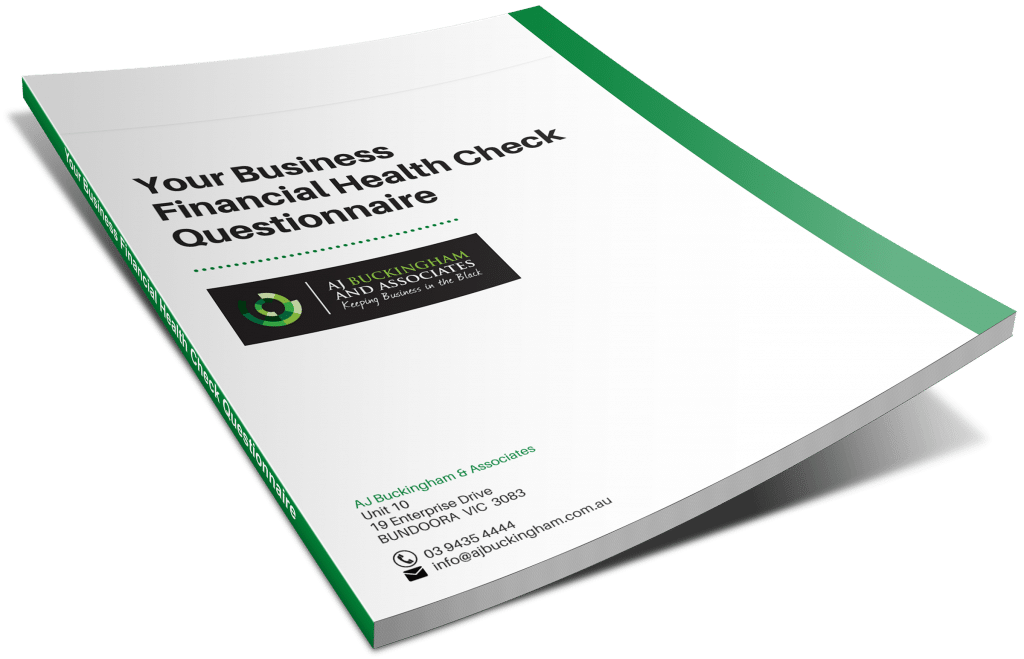The Australian Tax Office has been using small business benchmarks for a number of years. Essentially they take data from tax returns and activity statements and calculate a range of industry averages. These averages are in the form of financial ratios that they use to compare your business performance against. Their computer systems then automatically flag businesses whose financial results vary significantly from these benchmarks and they become audit targets.

Clearly, benchmarks don’t factor in abnormal transactions and the audits can potentially add to the cost of compliance for business owners. The financial ratios include salary and wage costs as a proportion of turnover, the ratio of Cost of Goods Sold to reported revenue and the ratio of input tax credits to turnover. These ratios are particularly useful for high risk, high cash turnover businesses like building and construction, cleaning, beauty salons, restaurants, cafes and takeaway food, road freight, smash repairs and taxis.
Florist Falls Foul of the ATO
A recent Administrative Appeals Tribunal decision highlighted how the ATO successfully applied the benchmarks to raise additional tax revenue. In fact, the result was an increase in tax of $57,389 and the GST shortfall was $16,745.
In this case the taxpayer was a GST-registered florist in Western Australia and her 2008 tax return reported ‘Cost of Sales’ of $259,982 on a turnover of $313,971.
This represents a Cost of Goods Sold (COGS) of 83% while the COGS industry benchmark percentage was between 44% and 54%. The ATO selected the business for scrutiny because the figures were significantly different to the industry benchmarks. The ATO initially requested she provide evidence that she was correctly recording and reporting her business income and in response her Tax Agent forwarded documentation to the ATO including EFTPOS statements, a spread sheet summary of cash register rolls, cash register roll receipts, bank account statements and several bank deposit slips. The documentation generally covered the period from April to July 2008.
Following the audit, the ATO advised the taxpayer that in its opinion, she had not kept adequate financial records and as a result, issued default amended assessments for income tax and GST (including penalties) totalling just over $130,000. These amendments were based on the COGS small business industry benchmarks. Her objection was partially allowed on the penalty issue (by reducing the administrative penalty for the income tax and GST shortfalls from 75% to 50% and a partial remission of the general interest charge), but disallowed the objection regarding the income tax and GST assessments. The taxpayer then appealed.
However, the Administrative Appeals Tribunal said there was no evidence before it to support the taxpayer’s contentions. The Tribunal considered that the taxpayer had failed to prove positively, on the balance of probabilities, that the relevant assessments were excessive. The Tribunal said the evidence did not prove how the taxpayer calculated the gross income of her florist business for the year ended June 30, 2008 and in particular, the cash component. The taxpayer’s problems in this regard appeared to arise as a result of the following:
- a defective cash register – the taxpayer said the cash register never worked properly, the roll never followed through correctly and constantly jammed;
- missing till (cash register) tapes for June 2008; and
- the fact that no reconciliations had ever been produced.
The spread sheet summary of till (cash register) rolls for April and May 2008 was unreliable in that:
- days were missing from the summary and other evidence before the Tribunal indicated that the taxpayer did, in fact, trade on the those days; and
- there was a difference between the total sales recorded on the spread sheet summary and the reported label G1 ‘Total Sales’ amount in the BASs for the business for April and May 2008.
The Tribunal considered that in the circumstances, it was open to the Commissioner to exercise his discretion and apply the COGS industry benchmarks. In addition, the Tribunal considered it was appropriate for the Commissioner to apply a base penalty amount of 50% on the income tax and GST shortfall amounts because those shortfall amounts were caused by her “recklessness”.
The Tribunal also stated, “that a reasonable person in [the taxpayer’s] position would have foreseen that there was a real … risk that by not reconciling the Z-tapes (i.e. cash register tapes) with the BASs and bank accounts with the florist business for the relevant period and, instead, by relying solely on the deposited cash in the bank to identify the sales of the florist business for the relevant period, her income tax returns and BASs may well be incorrect. Further, a reasonable person in [the taxpayer’s] shoes would have foreseen the risks of operating a business with a faulty cash register which is unlikely to record all sales and/or damage the Z-tapes such that the true sales for a particular day may be unascertainable.”
The lessons from this case are clear. Although the taxpayer said her business was struggling because of increased competition from a local supermarket, the lack of adequate systems and records meant she could not prove the amended tax assessments were excessive. Also, high cash turnover businesses are at risk and benchmarks are a powerful part of the ATO’s weaponry. Ignorance is not an excuse and the onus of proof is with the business owner.

